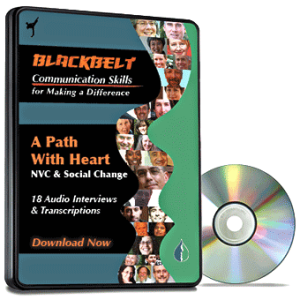This post was originally published to my email list on March 25, 2014. (Edited and revised for the blog.)
====================
I’ve been thinking a lot about a video I recently watched on the topic of why some people take massive action and others don’t.
In it, Tony Robbins shares a simple diagram that fascinates and intrigues me — and that I find powerful and useful.
And as I sat with these concepts I remembered an article I wrote, originally published to my list in September 2009 (and re-posted to this blog in February 2012), called “Mind Matters Most and You Reap What You Sow,” that also relates directly to this video.
I’ve updated the article and included it below, along with a link to the video. (Disclaimer: I don’t agree with every opinion, point of view, or lifestyle choice of the people in the video.)
I’m sharing these with you because I think there’s something remarkable here — both in the video and the article — for those of us committed to positive change.
Would you leave me a comment there telling me what comes up for you when you read and/or watch? I’d love to be in conversation.
Thank You,
~Alan
====================
Mind Matters Most and You Reap What You Sow
730 words
Average reading time: less than 3 minutes
“Become the change you want to see in the world.”
— Mahatma Gandhi
If you’re not getting the results you want — in your relationships or in your social change efforts — be intentional while planting seeds at the level of mind.
Inspired by S.N. Goenka
Part 1: Mind Matters Most
In our culture there is a general understanding that physical action has the most importance, verbal action has some importance, and mental action has virtually no importance.
My experience is otherwise, and this relates especially to the work that we do in trying to make the world a better place than we found it.
In fact, verbal and physical actions are nothing but indicators of the level of intensity of what I’m calling “mental action.”
Two examples to illustrate my point:
Example #1:
Suppose I see someone with whom I am angry & upset — someone I would consider my enemy. First my mental action starts: my upset and anger come to the surface. I begin thinking, You jerk! You had no right to do what you did. You are so wrong!, etc. This begins just in my mind.
If the intensity increases, only then will I say something. I’ll insult them, perhaps call them a name, or criticize or blame them.
If the intensity reaches a certain point, only then will I perform a physical action: I try to beat them up, physically hurt them, try to get them in trouble in some way, or worse.
(If you are a student of NVC, you’ll realize how intense my need for empathy is at this point, and how useful it might have been to address that earlier.)
Example #2:
I see someone in a very downcast or dismal condition, someone really down-and-out; perhaps it’s someone who is homeless and struggling with addiction, or perhaps it is a different circumstance.
My mental action starts: Compassion; I hope things work out for you; May you not only be given fish, but learn how to fish and be relieved of your suffering; May you find and develop the internal resources to help yourself, but also May we effect the structural changes necessary in society to reduce homelessness, and help lift people out of poverty.
If the internal intensity of my compassion and care increases, then I say something: some kind words, words of encouragement; I engage and connect in some way (vocal action).
Only after the intensity in mind reaches a certain point will I actually do something on the physical level: I may give them some food, or some money, or I’ll give them a ride to where they need to go, or I’ll bring them home so they can use my shower, something, but now at the physical level.
Vocal and physical actions are only “yardsticks” or indicators of the intensity of what is already happening in my mind and heart.
Part 2: You Reap What You Sow
Some people call it Karma, some people call it the law of cause-and-effect. Or as some might say, “plant a ‘tater, get a ‘tater.” It doesn’t matter to me what you call it. The fact is, that throughout our lives we want positive harvests, but we so often fail to be mindful while planting the seeds.
We sow seeds of fear, anger, and bitterness, and yet we want to be happy, or we want people to treat us with more respect, consideration and caring.
If I plant poisonous baneberry I will not harvest sweet blueberries, no matter how much I blame my spouse, the system, the man, the patriarchy, my boss, or the industrial growth society. If I want to harvest sweet blueberries, I need to be intentional while planting.
And what is the seed I’m planting? Is it my physical, vocal, or mental actions? This was exactly my point in part 1. Our physical and vocal actions are only an indicator of the intensity of our mental actions. This is why the saints, sages, shamans, and spiritual leaders have always said: Know thyself!
This is crucial in our work to make the world a better place. As long as our efforts are characterized by a lack of consciousness regarding our deepest intentions and motivations, we may not be very pleased with the results! Our work to create positive change in the world is not separate from our work to improve ourselves as human beings.
====================
[row]
[column size=”1/2″]
[note note_color=”#f7fafa” radius=”5″]
Full Transcriptions of our Comprehensive Program
Blackbelt Communication Skills Complete Training Transcription Pack
- Learn the 4 ways to interpret any message
- Realize deep distinctions between requests vs demands
- Gain key tools to resolve internal conflicts and get to know yourself more compassionately
- Develop potent practices around gratitude and appreciation
All of the information from over 50 different video training videos in a 174-page PDF that shares the best of Alan Seid’s 20 years of studying effective and compassionate Nonviolent Communication.
[/note]
[/column]
[column size=”1/2″]
[note note_color=”#f4fafb” radius=”5″]
Huge Amount of Inspiration for One Low Price
A Path With Heart: Telesummit on NVC and Social Change – Recordings and Transcriptions
- Discover leading-edge social change work that is truly creating a difference
- Hear in-depth interviews with some of the world’s best-known Nonviolent Communication trainers
- Get inspired with stories, tools and resources
We’ve brought together an amazing team of teachers and leaders who reveal valuable practical social change applications of Nonviolent Communication including Robert Gonzales, Miki Kashtan, Dominic Barter, Rabbi Michael Lerner and over 20 others.
Learn more on the A Path With Heart website
[/note]
[/column]
[/row]
[row]
[column size=”1/2″]
Get the full transcriptions of the Blackbelt Communication Skills Online Program.
Get details.
for $70
Only available as a download.
[/column]
[column size=”1/2″]
Download 18 audio interviews and transcriptions plus 7 bonus interviews now. Learn all about it.
Only $30.00!
Only available as a download.
[/column]
[/row]



Thanks so much Alan. You just explain the concept of mind-verbal-physical in simple English. This is such a profound concept and yet subtle, many has forgotten or never aware of it. Thanks again!
Thank you for reading, and for taking the time to comment. 🙂
Alan
Interesting read. I think what is missing is the issue of the unique context for each person. We all have OUR STORY and it is unique. The know thyself meme is critical in that one has to get to the point that they know what it takes to move themselves along. May be it is as TR says creating a daily ritual that they can stick to to drive the positive success feedback loop or may be it is hitting a wall and knowing it is time to change. I certainly have gotten to know myself well enough to know what it takes to move me along. I don’t always implement it but I do know how. Would love to speak with you further if you are interested. Tom
These guys just don’t share my reality or priorities and integrated life of authenticity. Do these guys want a sustainable world? or just more money and Porsches. I studied NLP when Tony and were I both students in 1982. He is not in line with my vision of everyones needs getting met.
Thanks for this. I kind of disagree, then again I have to own an antipathy for the competetive style that drives Tony Robbins.
I do agree with the notion of taking small steps regularly. I disagree with the much of the rest. For me, given much research suggests that we first have an emotion & then we rationalise it, it is about figuring on what is going on. What FEAR (Focus, Energy, Anticipation, Response?) is alive in me, because fear is a positive & life-affirming energy when we notice it early enough to be able to choose our responses. & it can become a blocking energy when we try to contain & constrain it instead of channeling it.
Hmmm,
Tom, I always enjoy talking with you, and all you have to do is ask. Thank you for taking the time to leave a comment. 🙂
Hi Simon:
Perhaps next time I write:
“Disclaimer: I don’t agree with every opinion, point of view, or lifestyle choice of the people in the video”…
…I ought to put it in ALL CAPS and boldface!
The fact that these guys’ worldview and lifestyle choices disgust you (I’m just guessing here) does not take away the main reason I shared this video, which is the diagram describing how we create feedback loops that influence the depth of the potential we are tapping in ourselves, which leads to the actions we take and the results we experience.
I guess maybe you missed that part.
I’ll add that Tony himself has evolved and changed over the years. It was Ken Wilber who pointed this out and allowed me to see Tony’s work with fresh eyes.
While Tony used to be a very hard-hitting success and achievement guy (vOrange), which completely turned me off, his more recent work on “states” is something that I am intrigued by.
And he brought my friend and colleague Wes Taylor to teach NVC to his students, and happens to be a fan of NVC.
Perhaps I gave you a haystack and said “there’s a very valuable needle in here” and that was frustrating.
The feedback I’ve received from the people who hung in there and experienced that “needle” seems overall positive and valuable.
Thank you, Simon, for taking the time to write.
Hi Rose:
I see your point and I agree.
However, I don’t see how this is in conflict with the main idea Tony is presenting, which has to do with how our mindset drives the level of depth of our own potential that we can reach.
I would add that the “competitive style” of Tony’s is something that’s also been a huge turnoff for me.
And yet, I’m pretty sure he and his work have evolved.
You may be thinking of the Tony from the 1990’s… his current work seems very different now.
Thank you for taking the time to comment, and sharing your perspective.